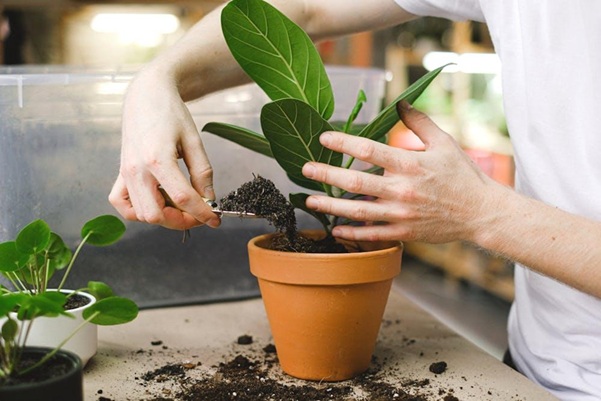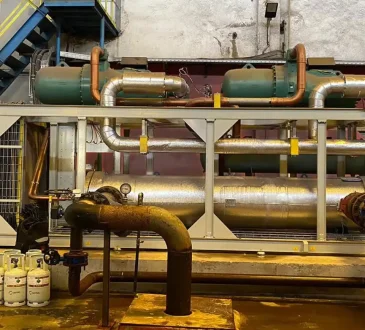
Whether you run a plant business or simply want to send a plant as a gift, it is important to find the best way to make sure the plant reaches its destination in good condition.
If you learn how to prepare and package plants the right way, you can send them through the mail safely to almost anywhere.
The plant industry is large, earning around $15 billion each year in the United States. Because of this, there are already well-established systems in place to help people send plants, seeds, flowers, and houseplants across the country.
In this guide, we will explain how to ship plants, the rules you need to follow when sending them across state lines, and how to choose the right shipping company. You can also use a trusted company to buy and ship plants by simply clicking here.
Preparing and Packing Plants for Safe Shipping
Making sure your plant arrives safely depends on careful preparation and packaging. This helps protect the plant and gives it enough water to survive the trip.
Here is a step-by-step guide to help you prepare and package your plant before mailing it:
1. Prepare and Remove the Plant from the Soil
It is often better to ship plants with bare roots rather than in their pots. Start by getting the plant ready for removal.
Water the plant five to six hours before you dig it up. The soil should be slightly dry when shipping.
Dig a few inches away from the stem to avoid damaging the roots. Wear gardening gloves and carefully take the roots out of the pot.
Next, gently loosen the soil around the roots and shake off any extra soil. Keep the bare roots in a shaded spot until you are ready to pack the plant.
2. Wrap the Roots in Damp Paper
Use damp paper to wrap the roots so the plant stays moist during the trip.
Soak four or five sheets of newspaper in water until they are damp, but not soaked. If the trip is long, you can mix water with two teaspoons of polymer moisture crystals and apply it to the roots.
Fold the newspapers in half and lay the plant sideways on the paper. The roots and stem should be in the middle, while the leaves stick out of the paper’s edge. This keeps the plant from rotting.
Roll the paper around the roots and stem while keeping the leaves outside. Use a compostable sticker or recycled tag to label the plant in an eco-friendly way.
Fold the bottom of the newspaper into the roll to make a base. Then place it upright in a plastic or eco-friendly bag.
Wrap the bag around the plant without covering the leaves. Leave the top open so the roots get enough air and moisture.
Wrap three to four more bags loosely around the whole plant to protect it. Each bag should face the opposite direction of the one before it.
3. Place the Plant in a Strong Box
You need a sturdy box that can handle rough handling during shipping. Corrugated cardboard boxes are a great choice—they are strong, eco-friendly, and help keep shipping costs down.
If you sell plants, you can buy custom plant shipping boxes made for the types of plants you ship. If you are shipping several small plants, use a divided corrugated box to keep them separated inside one package.
When placing the plant in the box, gently press out any extra air from the bag. The box should fit the plant closely to stop it from moving around.
To prevent damage, use ties or rubber bands to secure the plant to the box. Fill empty spaces with shredded newspaper, tissue paper, or foam for extra padding.
4. Seal the Box with Strong Tape
Close the box and seal all openings with strong packing tape. For best results, use the H-tape method.
Pro Tip: The H-tape method involves placing tape along the center and side seams of the box, making an “H” shape. This helps keep the box tightly sealed.
If you think the box might be handled roughly, use strapping tape on the corners and edges to strengthen it.
5. Add the Right Shipping and Handling Labels
Label the box with the plant’s name so handlers know what it is and how to care for it. You can also use compostable stickers that say “live plant” or “perishable” to show that the contents are delicate and should be delivered quickly.
Make sure to include a standard shipping label with the delivery address, return address, and tracking information. Avoid using regular paper labels that could absorb moisture and fall off.
It’s best to ship the plant early in the week so it doesn’t sit in a warehouse over the weekend.
Avoid mailing plants during holidays or busy shipping seasons like Mother’s Day. Also, check the weather at the delivery location. Extreme heat or cold can kill the plant if it sits in a delivery truck or outside for too long.
Shipping Potted Plants
Instead of removing your plant from the soil, you can ship it in its pot. This gives the plant more protection but increases the weight and cost.
Choose a plastic flower pot from a garden or home store that won’t break during shipping. Move the plant into the pot and water it the day before shipping to keep the soil moist.
Wrap the pot in newspaper and the plant’s leaves in burlap. Place the pot in a plastic bag and tie the handles around the stem. If the plant has several stems, cover the soil with paper and tape it to the pot.
If you’re shipping to a cold area, add bubble wrap around the package to protect the plant from low temperatures.
Put the plant in a box and use a cardboard divider to separate the pot from the leaves. Place the pot at the bottom and keep the plant upright. Mark the box with “This End Up.” Fill extra space with packing peanuts or bubble wrap to keep the pot in place.
Seal the box with packing tape and apply all necessary labels. Do not add water before shipping, as it may leak and damage other packages.
Materials Needed for Shipping Plants
To follow the steps above, you will need:
- Gardening gloves
- Lightweight plastic pots
- Sterilized potting soil
- Newspaper or wrapping paper
- Plastic or eco-friendly bags
- Ties or rubber bands
- Bubble wrap
- Paper towels
Rules for Shipping Live Plants
While you don’t need special tools to mail plants, there are rules you must follow when shipping across state lines or to another country.
Mailing Plants Within the U.S.
Most plants can be mailed within the U.S. as long as the USDA does not ban them. Check the USDA website for state-by-state rules.
Each state’s agriculture department decides what plants can be mailed based on possible risks. Rules may cover soil types, plant types, and pest-free certifications. Some states require that plants be grown in clean potting soil indoors.
States like California, Florida, and Hawaii have stricter rules. For example, California does not allow citrus plants because of the risk of pest infestations like the gypsy moth.
Visit the National Plant Board website to find state-specific rules.
Mailing Plants Internationally
To send plants to another country, you must first get a phytosanitary certificate. This certificate confirms that your plant shipment has been treated to remove pests and diseases.
You’ll also need the right customs forms and must follow the destination country’s plant shipping rules. These rules are meant to protect local plants and prevent the spread of pests.
Check with the destination country’s government to avoid having your shipment rejected.
Best Shipping Carriers for Plants
Plants need fast shipping because they are perishable. The longer they are in a box without water and sunlight, the more likely they will get damaged.
You can ship with USPS, FedEx, or UPS. Here are some good shipping options from each:
USPS
- Priority Mail: Starts at $7 for 1 lb or less, arrives in 1 business day.
- Priority Mail Express: Starts at $20 for 1 lb or less, arrives in 2 business days.
- Flat Rate Priority Mail: Starts at $12 for 1 lb or less, arrives in 1–3 business days.
FedEx
- FedEx Overnight: Starts at $64 for 1 lb or less, arrives by 8 am.
- FedEx Priority Overnight: Starts at $30 for 1 lb or less, arrives by 10 am.
- FedEx Standard Overnight: Starts at $30, arrives by 3 pm.
- FedEx Ground: Starts at $9, arrives within 1 business day.
UPS
- Next Day Air: Starts at $28 for 1 lb or less, arrives by 10:30 am.
- UPS Ground: Starts at $14, arrives by the end of the next day.
Final Thoughts
Mailing plants takes planning and care. You need to understand the rules and follow the steps closely to protect the plant and avoid problems during shipping. By preparing and packing your plant the right way, you can make sure it arrives healthy and safe. Good luck!




